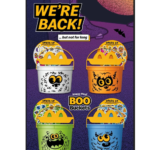The dropshipping market is on a remarkable growth trajectory, with projections by Global Market Insights Inc. suggesting the industry will surpass a staggering $1.51 trillion by 2032. The rapid expansion of this market can be attributed to several factors, including the rise of cost-effective social media advertising, increasing interest in niche markets, and the flexibility that the dropshipping model offers to entrepreneurs.
This article delves into the major trends shaping the dropshipping landscape and how businesses and individuals can capitalize on this booming market.
Cost-Effective Social Media Advertising: A Key Growth Driver

One of the primary factors driving the growth of the dropshipping market is the increasing reliance on social media platforms for advertising. Platforms like Facebook, Instagram, and TikTok offer highly targeted, affordable advertising solutions, allowing dropshippers to reach specific audiences with minimal investment.
These platforms provide sophisticated targeting options that enable dropshippers to customize their campaigns based on demographics, interests, and online behavior. This precision boosts the effectiveness of ads and drives higher conversion rates. As a result, small and medium-sized enterprises (SMEs) are leveraging these platforms to enhance visibility, increase sales, and build brand awareness in a cost-efficient manner.
The Rise of Niche Marketing
Niche marketing is quickly becoming a dominant trend in the dropshipping industry. With increased competition, many dropshippers are moving away from broad product categories to focus on specialized markets, such as eco-friendly products, fitness gear, or unique hobbies. By targeting specific, dedicated audiences, dropshippers can differentiate themselves from competitors and cultivate loyal customer bases.
Social media and e-commerce platforms are critical to the success of niche marketing. These platforms allow dropshippers to engage with specialized communities, tailoring content and advertisements to their unique needs and preferences. This targeted approach not only increases customer engagement but also leads to higher conversion rates and repeat business.
Key Dropshipping Market Segments
The dropshipping market is diverse, covering a wide range of product categories. In 2023, the fashion & apparel segment led the market, accounting for approximately 25% of the total share. This segment continues to thrive due to consumers’ consistent demand for trendy clothing and accessories, which allows dropshippers to offer a broad range of products catering to various tastes and seasonal trends.
Other key segments include electronics, home & kitchen, beauty & personal care, health & wellness, toys & baby products, and sporting goods. Each category presents unique opportunities for dropshippers to tap into evolving consumer preferences and emerging trends.
Dominance of Individual Consumers and SMEs in the Market
The dropshipping model is particularly attractive to individual entrepreneurs and small businesses. In 2023, the individual consumer segment held a commanding market share of approximately 83%. This is largely due to the low entry barriers and minimal financial risk associated with dropshipping. Unlike traditional retail models, dropshipping eliminates the need for upfront inventory purchases, making it an ideal option for individuals looking to start an online store with limited capital.
In addition, dropshippers benefit from the flexibility of not having to manage warehousing or logistics. Suppliers handle product storage and shipping, allowing entrepreneurs to focus on marketing and customer service. This model also enables scalability, as dropshippers can easily expand their product range without worrying about inventory management.
The Future of the Dropshipping Market
As the dropshipping industry continues to grow, driven by technological advancements and shifting consumer behavior, several key trends are expected to shape its future:
Increased Use of AI and Automation: Dropshippers are likely to adopt more AI-driven tools to automate tasks like order processing, customer service, and marketing campaigns. This will further streamline operations and reduce costs.
Sustainability and Eco-Friendly Products: As consumer demand for sustainable products rises, dropshippers offering eco-friendly and ethically sourced items will have a competitive advantage in the market.
Enhanced Customer Experience: Dropshippers will increasingly focus on improving customer experience through faster shipping times, better communication, and personalized marketing.
Cross-Border Dropshipping: With e-commerce becoming more global, dropshippers will have the opportunity to expand their customer base internationally, leveraging platforms that facilitate cross-border transactions and logistics.
Conclusion
The dropshipping market is set to reach an impressive valuation of $1.51 trillion by 2032, fueled by social media advertising, niche marketing strategies, and the flexibility the business model offers. Whether you’re an individual looking to start a new business or an SME aiming to scale, the dropshipping industry presents a wealth of opportunities. By staying ahead of emerging trends and leveraging the power of digital marketing, dropshippers can build successful, sustainable businesses in this rapidly growing market.






